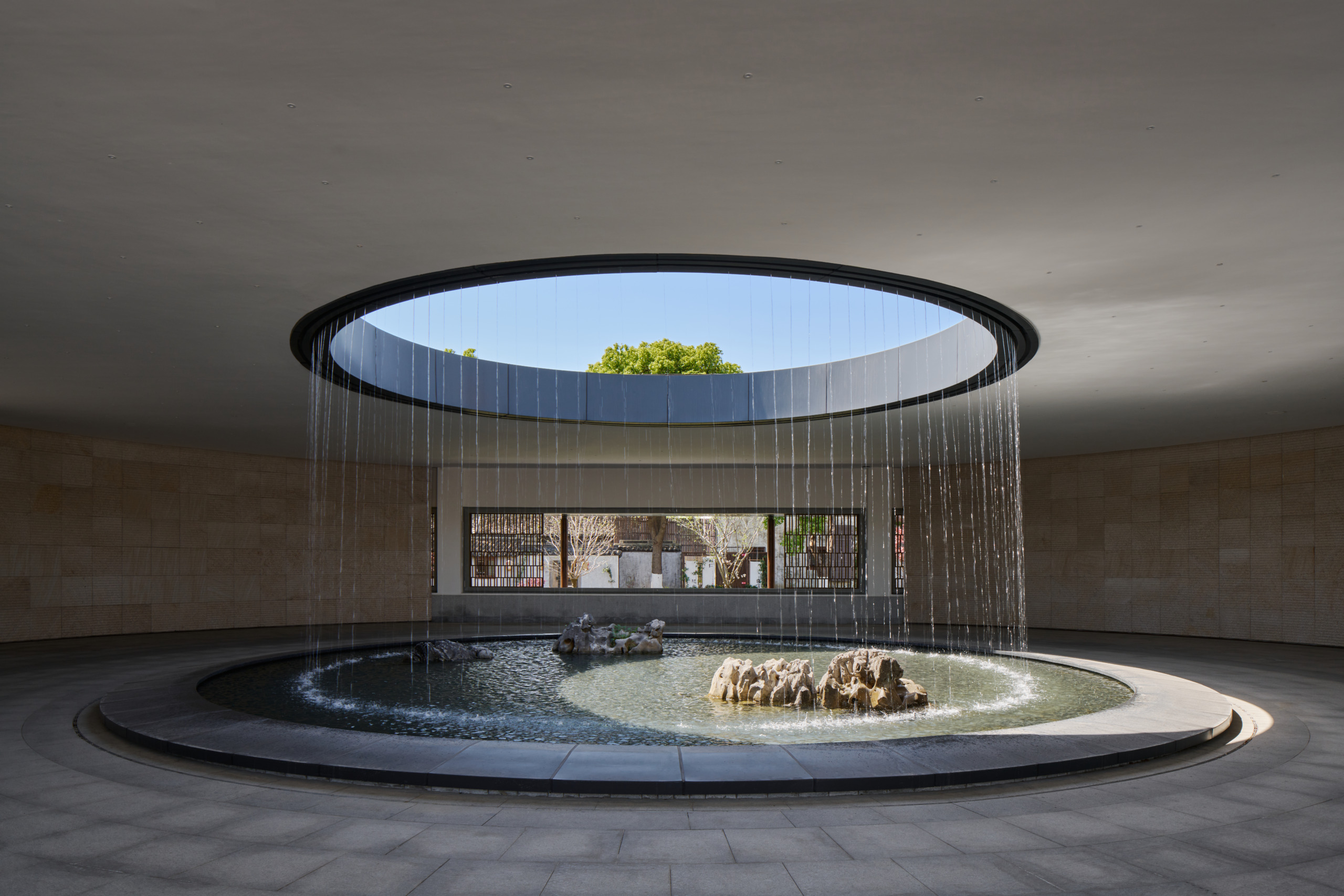Hotel Wuxi MGallery Collection: Part of a Story
By WATG
July 1, 2025
Raghavendra Shanbhag, Creative Director of Architecture, and Paolo De Simone, Creative Director of Wimberly Interiors, discuss the design journey of Hotel Wuxi MGallery Collection
Storytelling
Since time immemorial, humans have sought experiences that provoke a deeper sense of connection to diverse patterns of lifestyle. These experiences that highlight philosophical meanings to our lives are intricate, fascinating and ever-changing across the world. It’s no surprise, then, that travel has become an integral part of our lives –satisfying our exploratory minds with new cultures and experiences in order to find intellectual respite from everyday life, and to help us evolve. The expectations of a modern-day traveler have changed over time, although one principle that always remains a given is the spirit of place.
Every place has a spirit or an essence which Leon Krier describes as genius loci. It has past, present and future as three realms which as a whole form the core of the place connecting the space-time continuum. Stories that are narrated through the medium of design use these realms to form an unwavering thread that captivates a user, hence revealing them to these experiences of senses and beliefs. The result? Memories that are exclusive to the place.
Stories offer:
- Authenticity: an authentic way of life in the location they visit
- Hyper-localization: a tailored experience that is specific to the place
- Social engagement: being a part of a community
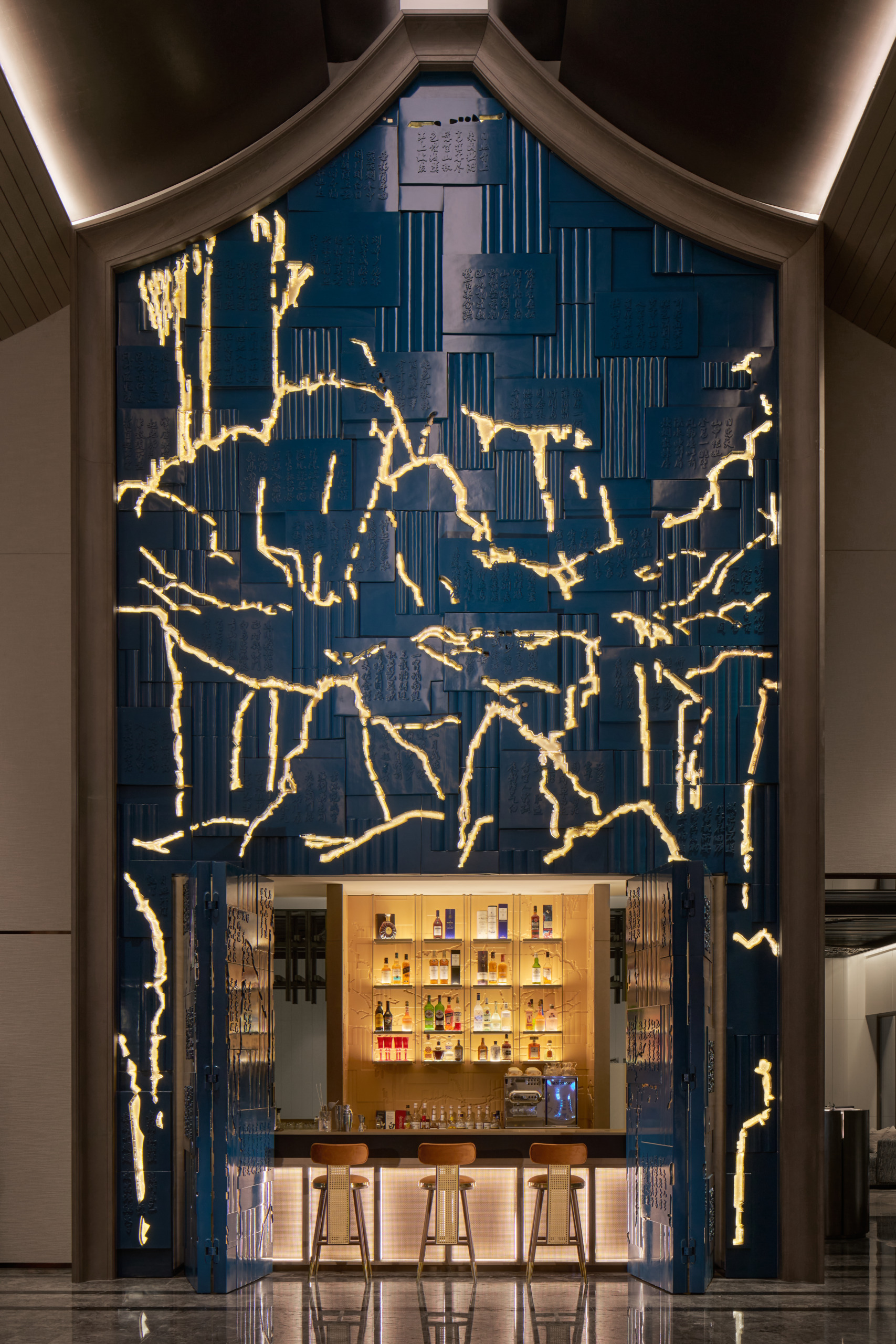
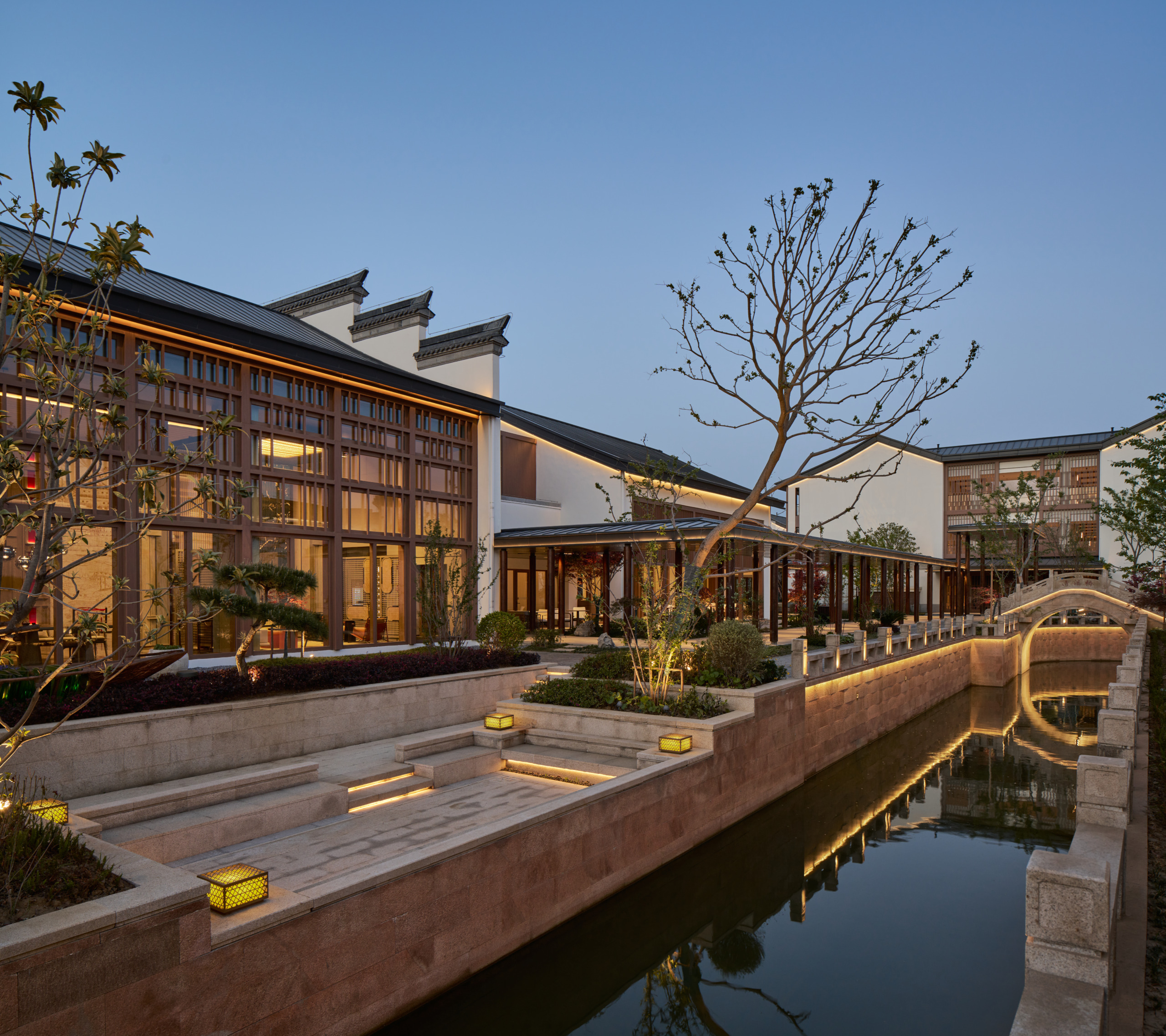
Space and Time
As designers, we act as orchestrators – weaving together the unique experiences of a place with the engineered environment. In each design, whether it a hotel or a residence, a unified story must be told that celebrates the very best elements of the natural and built environments, culture, community, landscape, interiors and branding.
We envisioned Hotel Wuxi, MGallery Collection, in China on these same principles of weaving a story around space and time. Dangkou Ancient Town is an ancient city, rich in history, in the south of the Yangtze River. The essence of Wu culture – the concept of Jiangnan gardens in architecture and landscape – celebrates a sense of harmony: nature and humans are one. Water canals connect areas of the old town spread across like a network of waterways between various lakes. Traditional courtyard houses are nestled along the canals, accentuated with moon bridges that evoke charm and romance of a bygone era.
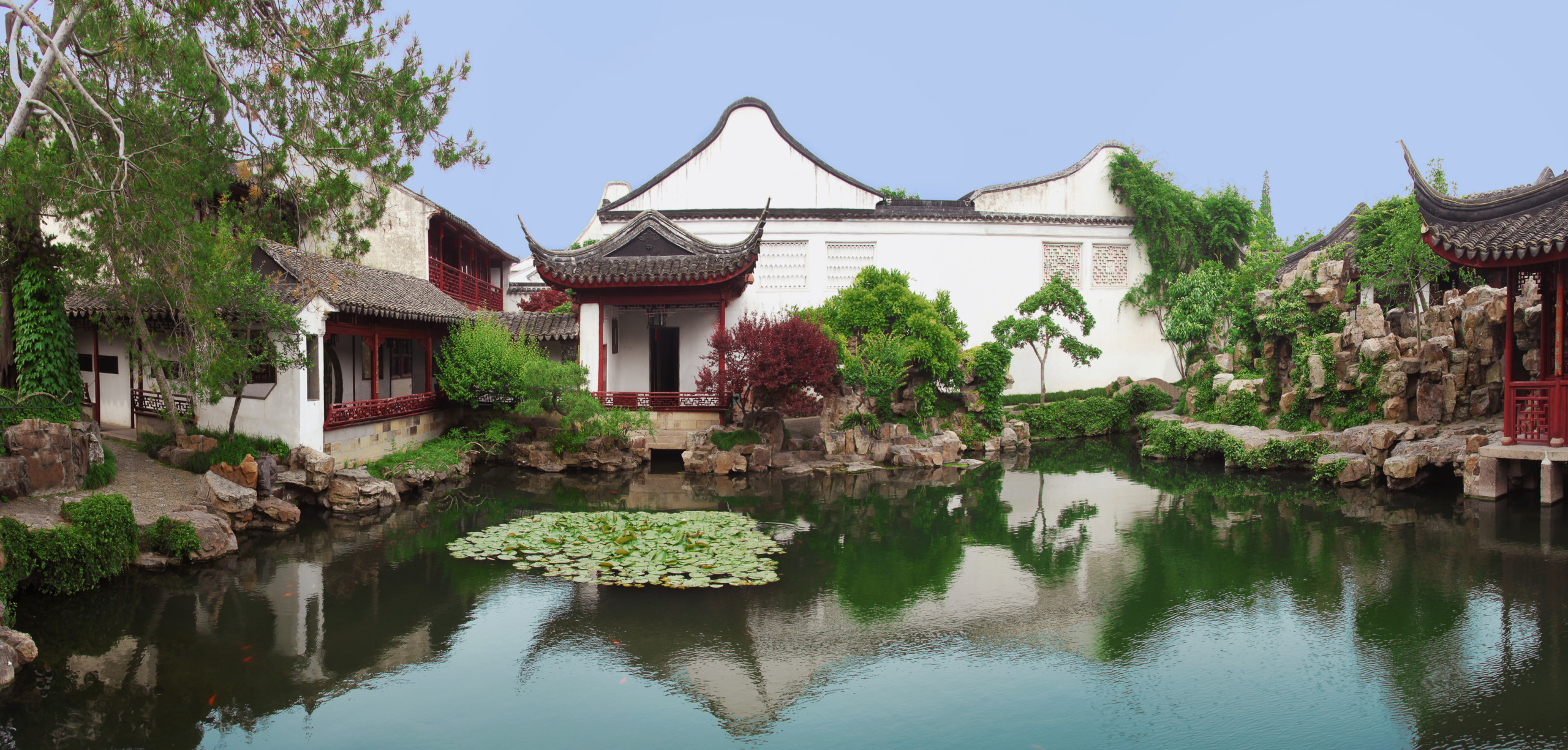
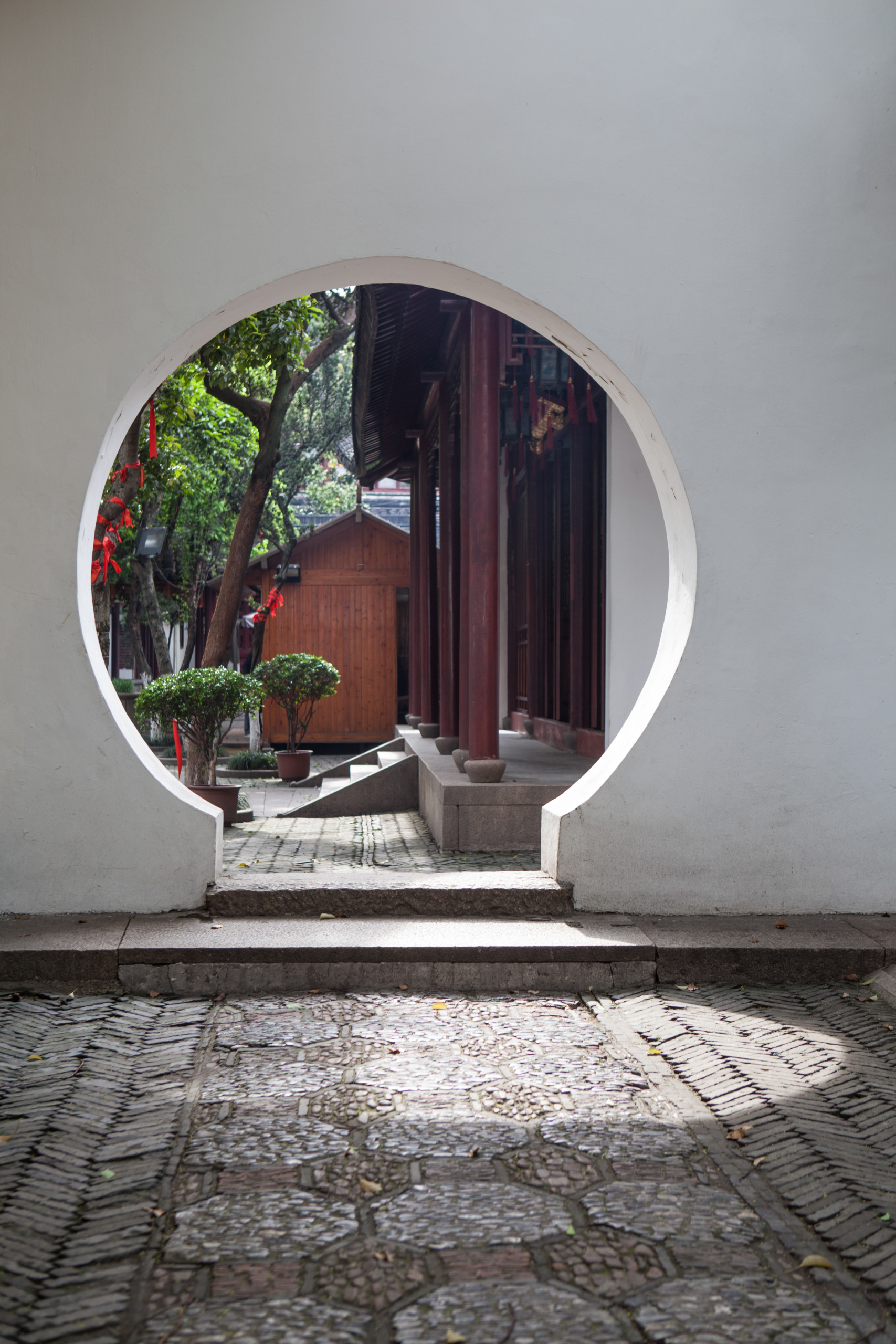
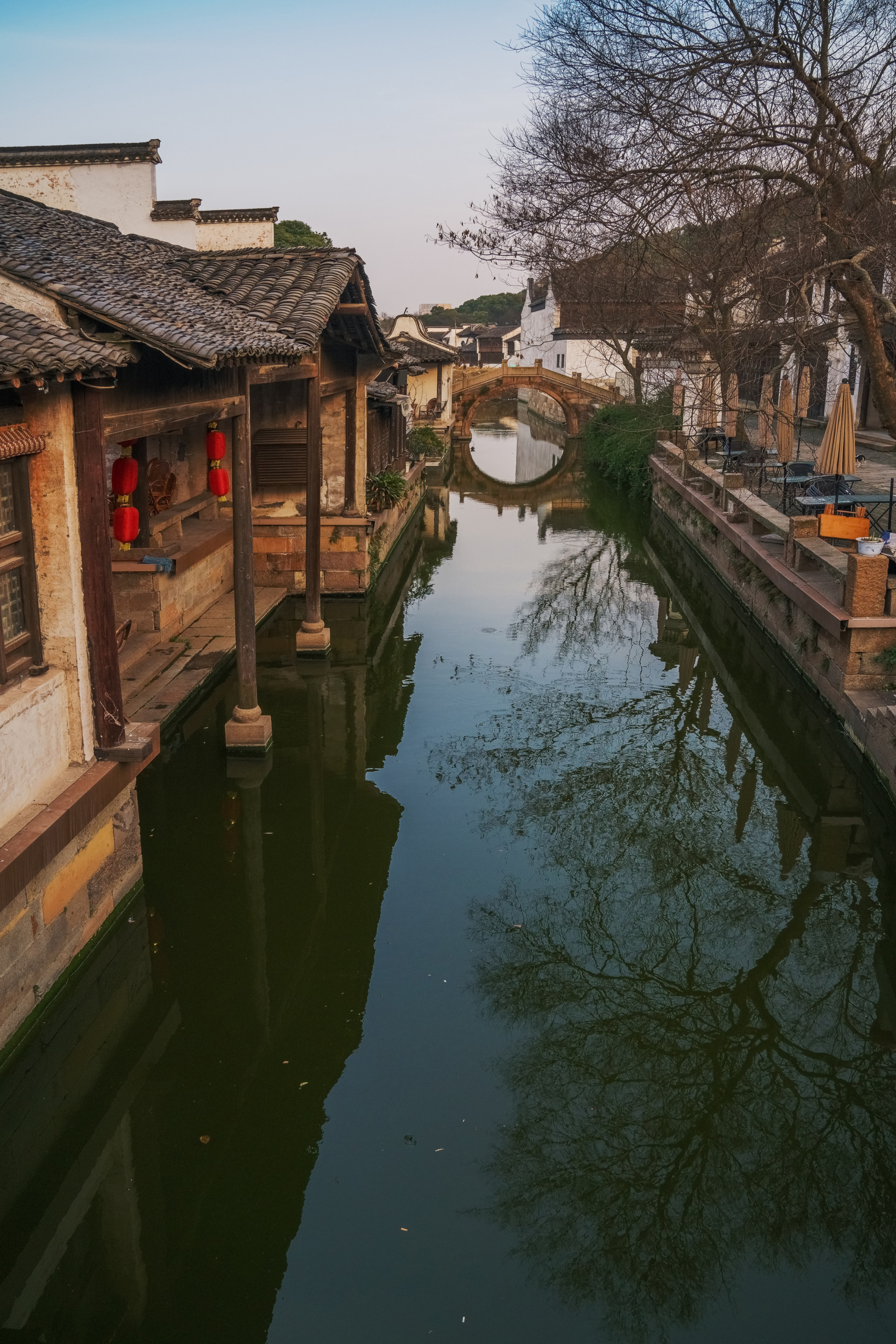

Generational Appeal
The canal town has been at the forefront of authentic cultural and developments in China due to the famous intellectuals and luminaries who excelled fields of knowledge, culinary, arts, mathematics, science, music and printing here centuries ago. This knowledge and art has been passed down, through the generations, and the traditional customs are kept intact and celebrated still to this day It’s also a “hot” destination for younger travelers, not only for this authenticity but also the filming of popular drama Forever and Ever, featuring famous actors Ren Jia Lu and Bai Lu, taking place in parts of Dangkou ancient town.
“We have created an immersive experience for guests that extends beyond the bounds of traditional hospitality.”

Water as the Connector
We deeply understand the importance of tradition and respect of local culture and community. Pete Wimberly, our founder, pioneered these principles 80 years ago, and they remain paramount in our process today. This same philosophy has served as the foundation of this particular project.
Our vision was to connect to all guests – both old and young –and encourage each of them to be a part of this continuing story. Water, which played a significant role in Wu culture through its inclusiveness and flexibility, is used to weave the design together by extending the canals into the property. Cultural spaces like the library, teahouse, art pavilions and cultural halls are combined with hotel functions to add an additional layer of authenticity to the experience. These spaces are strategically located in the guest’s journey and connected by a network of water canals that form a necklace of experiences.
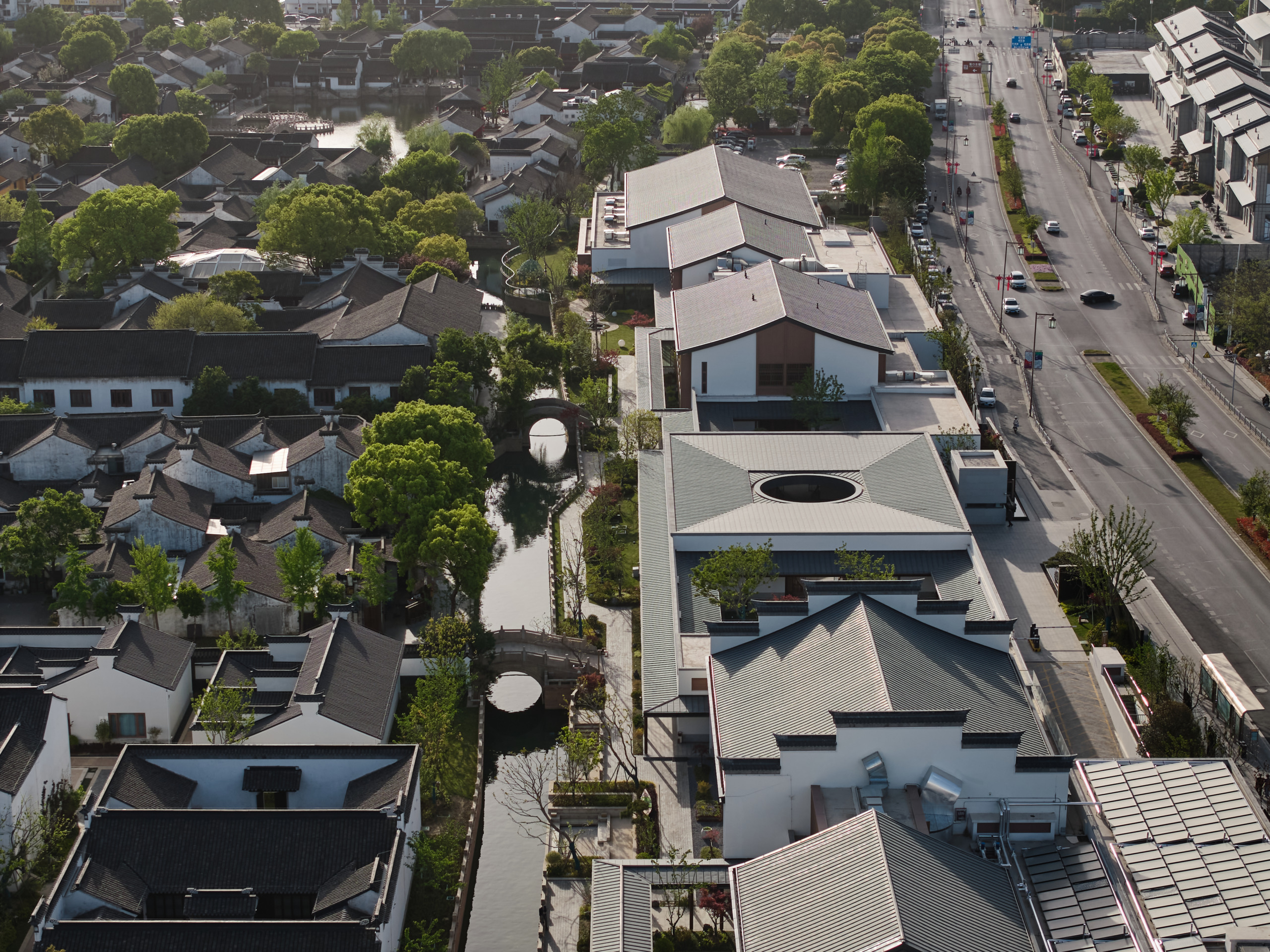
a microcosm of nature
The general planning pays respect to Jiangnan architecture designed around the concept of traditional courtyard houses and Chinese garden principles – a microcosm of nature is followed in an aim to create tranquil spaces with shifting and borrowed views. Water canals are used to connect spaces extending the current network of water ways in the old town.
“We have demonstrated a deep respect for the past—honoring local artistry, textures, and cultural symbolism—while seamlessly integrating forward-thinking design principles.”
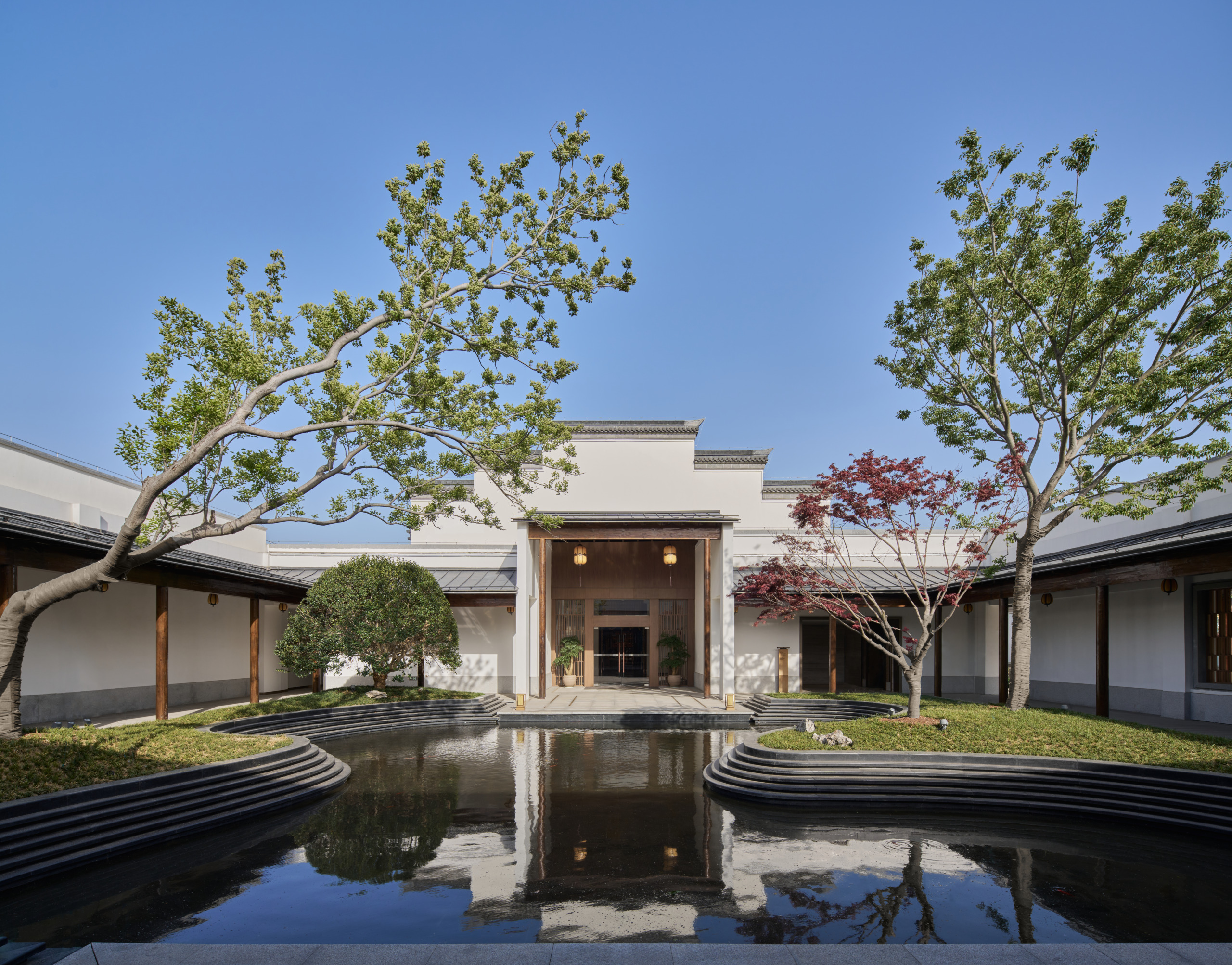
contemplative, grounded, and serene
The lobby is inspired by a library – a center for knowledge which pays tribute to the grand master Hua Cha who lived here centuries ago. A space to welcome and greet guests, this space is at the heart of the property and provides an opportunity to bring in new function in an older spatial typology.
The arrival experience is a poetic first chapter of the guest journey. Inspired by a Hua Cha poem that evokes the solitude of a mountain hut surrounded by nature, the lobby is anchored by a monumental, floor-to-ceiling artwork that frames the essence of the mountains. This sets the tone for the entire stay: contemplative, grounded, and serene.
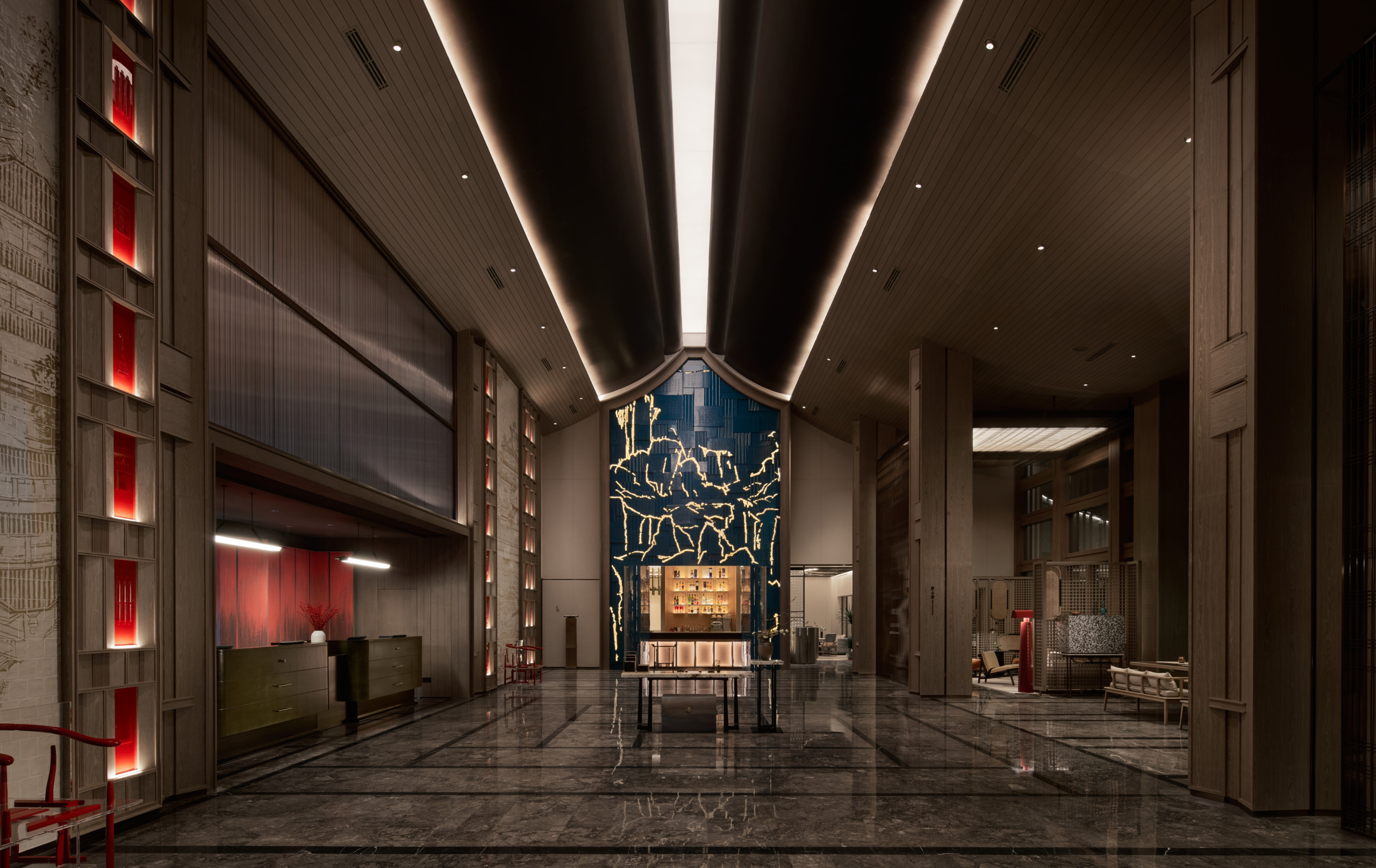
borrowed scenery
Guestrooms continue the narrative with grace and depth. Drawing from the 20 scenic spots of the Jiadun Garden, the interiors translate poetic imagery into tactile reality. Furnishings are minimal yet warm, designed to encourage quiet reflection. Materials such as natural timber and stone were selected not only for their visual appeal, but for their ability to age beautifully—telling a story over time. Large windows frame curated views, blurring the boundary between interior and exterior, echoing the traditional Chinese garden principle of borrowed scenery. Spaces open and close rhythmically, orchestrating movement through light and shadow, intimacy and openness. Each room is conceived as a private sanctuary—one that reflects the natural elements of Dangkou and Hua’s introspective worldview.
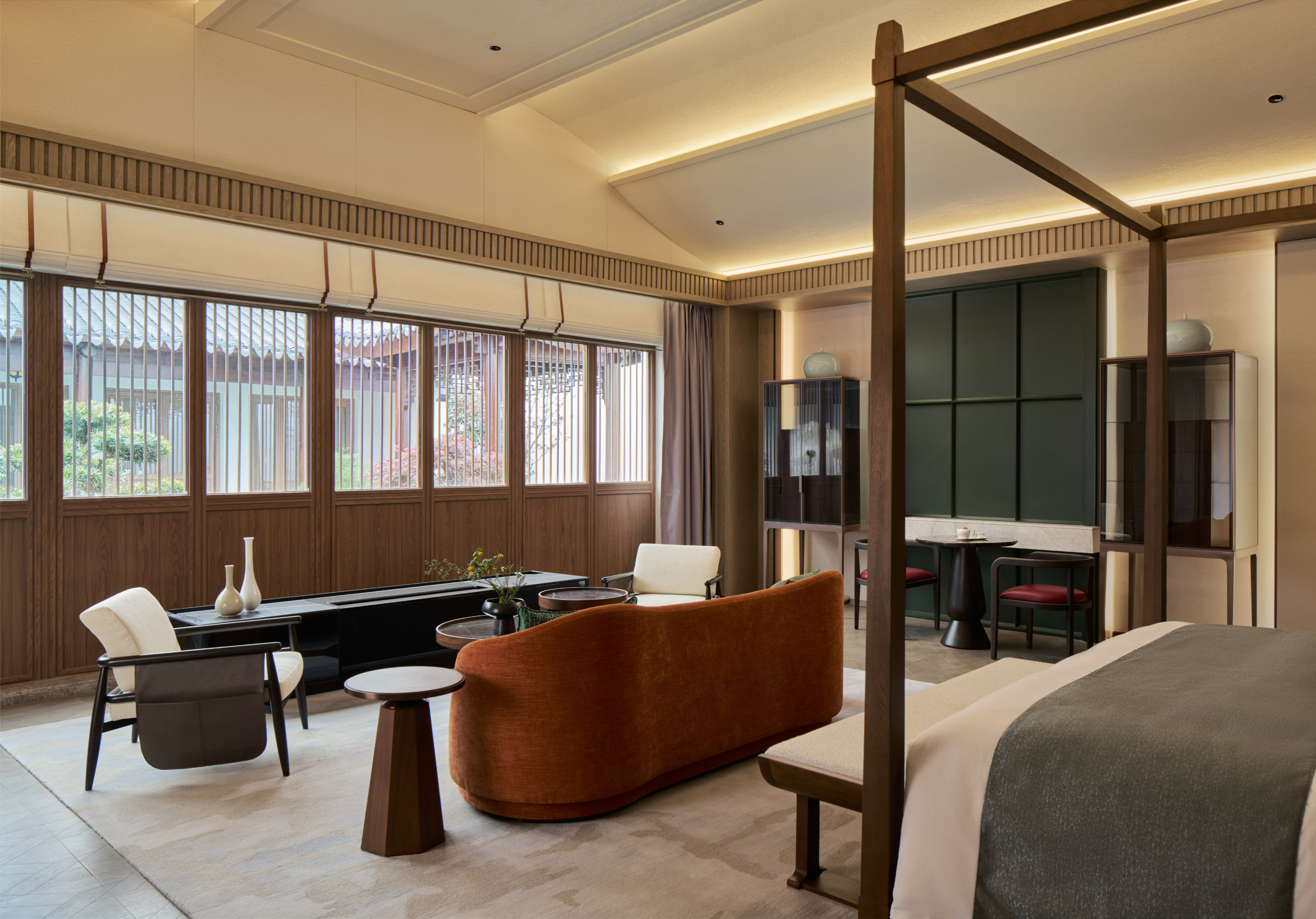
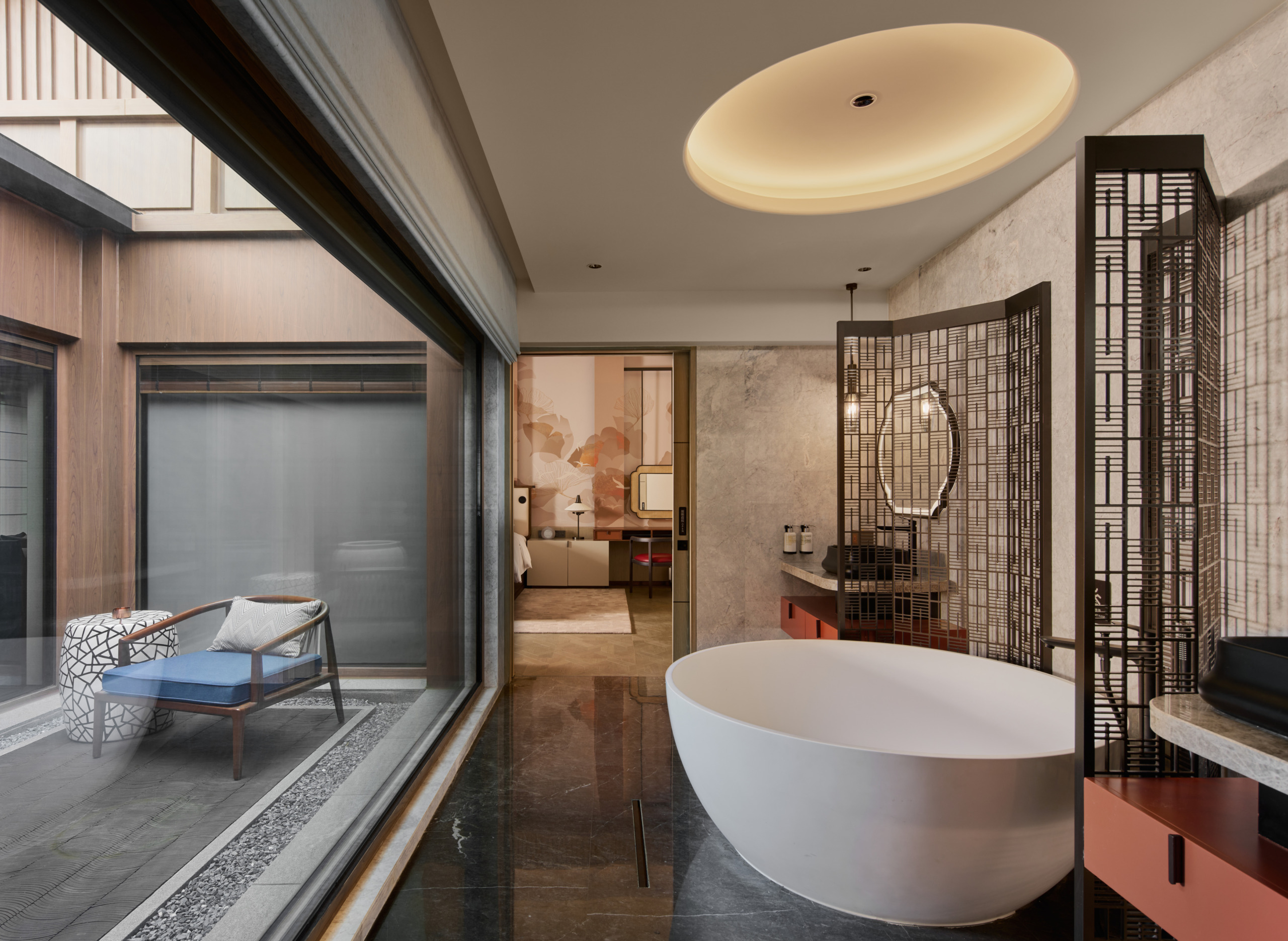
diversity and dreams
Diverse amenities and experiences give a hands-on moment for guests to engage in learning local arts and crafts like weaving and calligraphy. These are combined with hotel programs such as a tea house and children’s craft area, further providing the opportunity for social engagement with the local community.
As a listener, hearing positive stories opens one’s mind to diversity leading to dreams that bring excitement. But engaging in a story through participation adds new layers and dimensions that evoke something much deeper. The value here is much more profound than a story. Hotel Wuxi, MGallery Collection is a humble effort that achieves both.
Hotel Wuxi, MGallery Collection
WATG + Wimberly Interiors thoughtfully crafted a design where stories of culture and history come to life in every corner.
Latest Insights
Perspectives, trends, news.
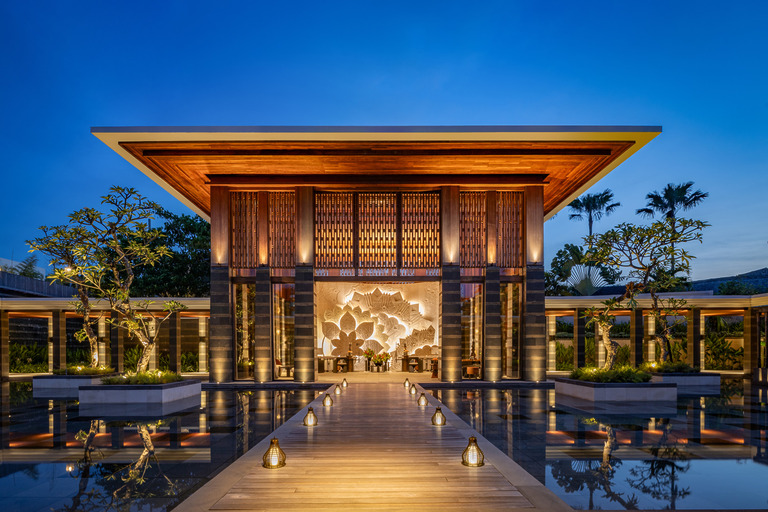
- News
2025: A Year in Review
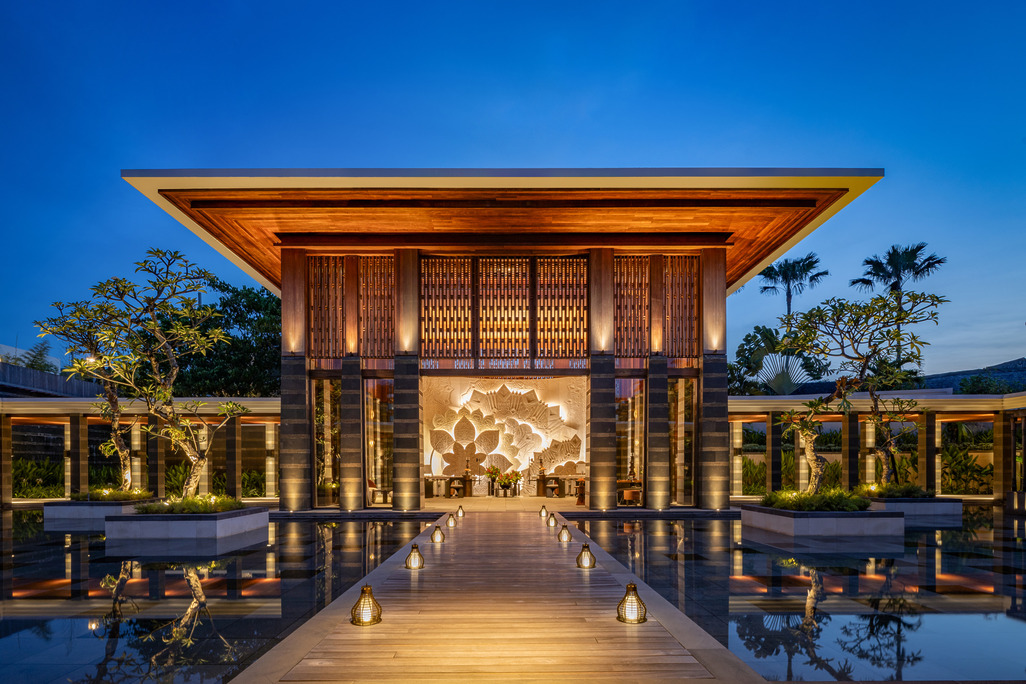
- News
2025: A Year in Review

- Design + Innovation |
- Design Thinking
The Architect of the Future

- Design + Innovation |
- Design Thinking
The Architect of the Future

- News
WATG Leads Landmark Initiative to Shape the Future of the Giza Pyramids

- News
WATG Leads Landmark Initiative to Shape the Future of the Giza Pyramids
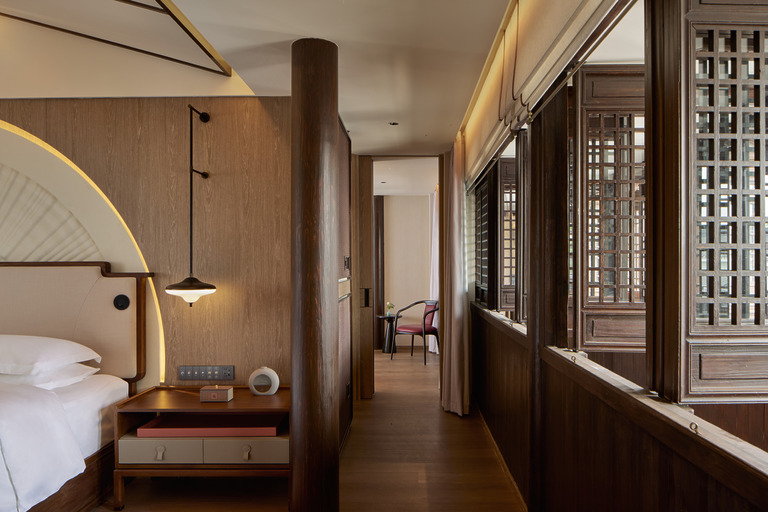
- Strategy + Research |
- Trends
Interior Design Trends 2026: Authenticity, resonance, and resilience.
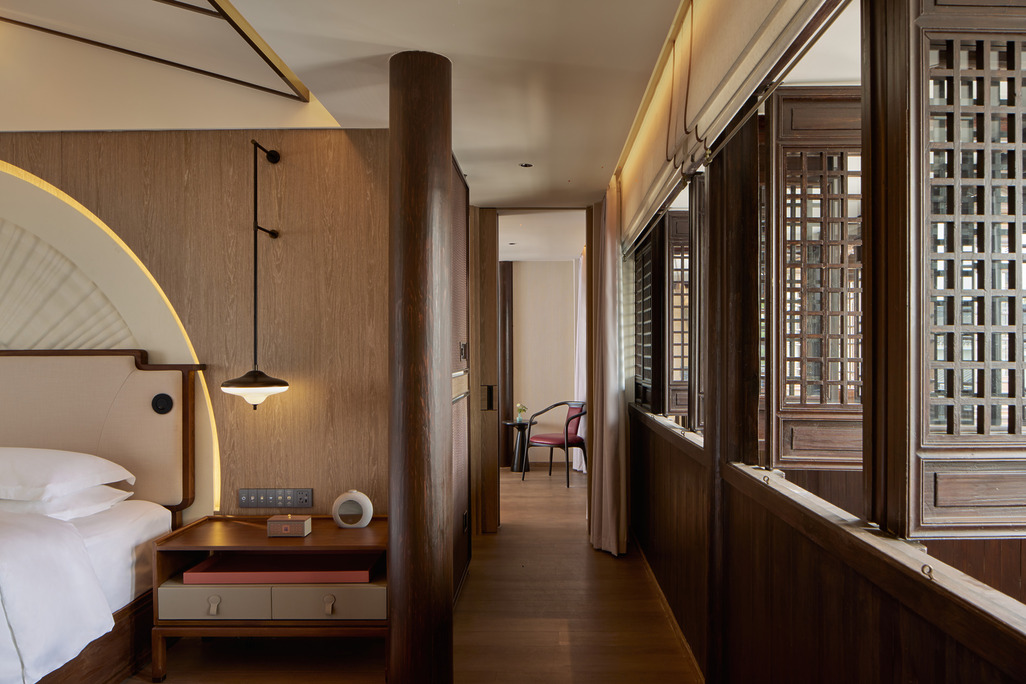
- Strategy + Research |
- Trends
